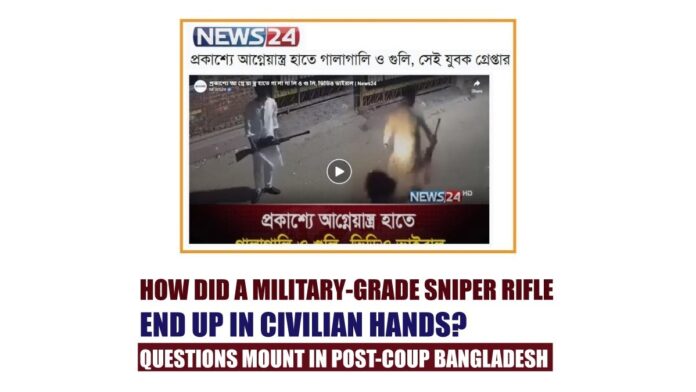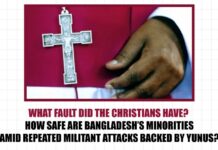
A chilling image shared by the Bangladesh Police on their official Facebook page last week has sparked widespread concern: a young man holding what appears to be a high-powered 7.62mm sniper rifle, a weapon far beyond civilian use. The authorities sought public assistance in identifying him, but the post raises deeper questions than it answers: How did such a weapon end up in civilian hands? And what does it reveal about the chaotic months surrounding the August 5 regime change?
According to multiple sources, law enforcement agencies had prior intelligence that radical elements had looted arms stockpiles in the lead-up to the political upheaval that ousted Sheikh Hasina’s government. Asif Mahmud, now a known figure linked to the insurgent network, allegedly admitted after the power shift that his group had been preparing to take to the streets with stolen weapons if the government had not stepped down by August 5.
These revelations underscore growing public fears about how organized and well-armed these extremist factions were — and possibly still are. In recent months, Bangladesh has seen a disturbing surge in targeted violence. From police officers ambushed in broad daylight, to the high-profile killing of journalist Mugdho, and even a child shot from a rooftop — all of these incidents are now being linked to these armed groups.
Security analysts are alarmed by the apparent ease with which militants accessed sophisticated weapons. “The presence of a 7.62mm sniper rifle in civilian possession is not just a breach of protocol — it’s a catastrophic failure of national security,” said a retired military official who requested anonymity. “This is not a weapon you stumble upon at a local arms bazaar. It suggests supply lines, logistics, and insider knowledge.”
The interim administration under Dr. Mohammad Yunus, now under increasing scrutiny for its failure to prevent the weaponization of political conflict, has yet to offer a clear explanation. Critics argue that elements within the state either turned a blind eye or were actively complicit in enabling this militarization.
The Bangladesh Police’s sudden call for help in identifying the suspect, weeks after internal intelligence reportedly flagged the group, has only deepened suspicion. “Why now?” asked one political analyst. “The state seemed to know who these people were, what they planned, and what they were capable of. The fact that nothing was done speaks volumes.”
As the country grapples with a fragile transition and increasing insecurity, the image of a young man cradling a sniper rifle is more than a social media post — it’s a symbol of a nation sliding into armed instability. The question is no longer how these weapons got out, but who let them — and why.



